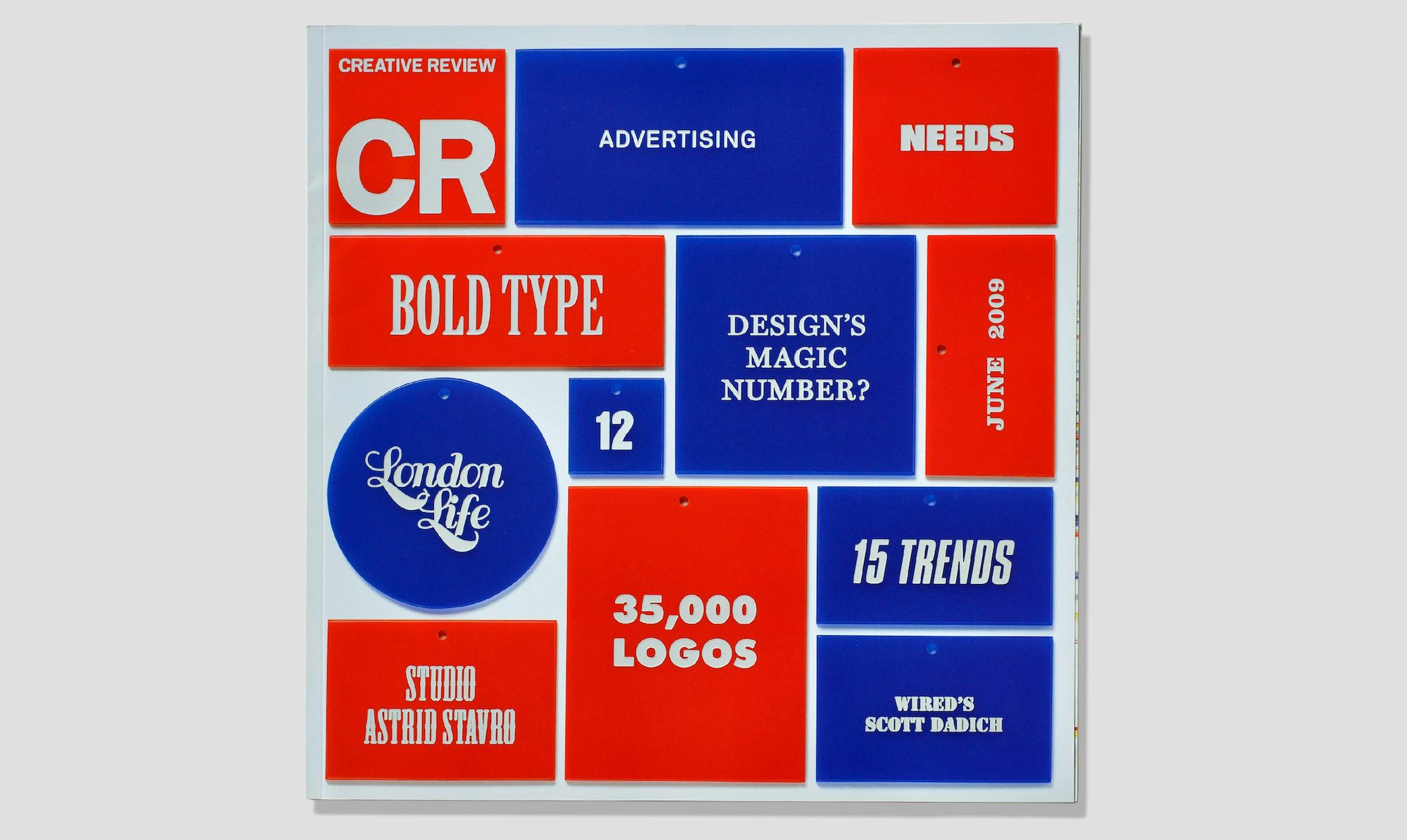Astrid Stavro on why she’s never had a career plan
Six months into her role as vice president creative director at Collins, the former Pentagram partner talks to us about why it’s good to be uncomfortable
Before Astrid Stavro joined Collins, the US behemoth of an agency wasn’t particularly on her radar – nor was she especially looking for a new job. When she began conversations with Collins, Stavro was freelancing, having left her role as Pentagram partner in October 2021. “I was enjoying the freedom of being freelance – taking on my own clients and so on, and just organically growing the team for whichever projects required it,” she says. “But it felt a bit … I was essentially on my own.”
As for many of us during and post-lockdowns, there was a sense of isolation: working remotely wasn’t entirely new to many creatives, but the enforced solo-ness for vast swathes of time can lead to even the most introverted of freelancers feeling a bit, well, off. Before Stavro had even been introduced to Brian Collins, the eponymous co-founder of the agency, she had admired its work for clients like the San Francisco Symphony, OpenWeb, and Medium. “That’s when they fell into my radar to be completely honest – partly because they’re in the States and I was more European-centric,” she says.
It was her first Zoom with Brian Collins that changed everything. Introduced by a project manager Stavro had known from a previous job, Stavro was assured they would get on like a house on fire. Long story short, they did. “I had no expectations whatsoever – I didn’t know him personally, but I thought it’s always good to meet people,” says Stavro. “I literally had tears of laughter rolling down my cheeks for an hour. He’s so hilarious; he cracked me up, and it was totally relaxed. And I like a good laugh; I like people with a sense of humour.” They reconnected around a month later, when Collins said Stavro should also meet Leland Maschmeyer, the agency’s CEO and co-founder.


What surprised Stavro about her meeting with Maschmeyer was his ability to get her excited about something that hadn’t really interested her before – business. “He got me excited about the vision of the company in terms of what they are trying to achieve, because the ambition behind the actual business is equal to the creative ambition,” says Stavro. “I thought that was interesting. It sets them apart.”
To be specific, what Stavro found interesting was the steps that Collins as an agency was taking to stop design being undervalued – both by clients, and by the world at large. She explains that for a rebrand project, for instance, Collins no longer sends an invoice at the end of each project, nor does it work on a retainer model: rather it now uses a ‘subscription’ model that it’s been trialling for a year or so. It comes down to Collins’ stated MO of ‘brand transformation’ – as opposed to delivering a singular rebrand. “That’s different because you’re not transforming the business – you’re delivering branding,” Stavro explains.
CEOs don’t really care much about whether you use Helvetica or Akzidenz Grotesk. Whereas if you talk their language, it’s a completely different game
“When you transform the business, you go ‘so you’re here today, but actually, we’re gonna give you a holistic strategic framework that will catapult your business into the future’. You can change the branding, but because everything is changing so fast today, two years later, you’re going to have to change it again because it constantly needs updating. Whereas if you operate from a business transformation perspective, you’re ahead of the game because you’ve already thought of what’s going to happen three, four or five years down the line. It’s about understanding how you can really transform a brand – just changing the branding doesn’t change how your company operates, you’re just kind of patching it up. You’re speaking a language that’s beyond design.”



That ‘language’ is a canny tool when it comes to persuading non-designers – and the business people who largely hold the purse strings – of the value of design agencies in the first place. As Stavro points out, “CEOs don’t really care much about whether you use Helvetica or Akzidenz Grotesk. Whereas if you talk their language, it’s a completely different game.”
Now six months into her role at Collins, Stavro has got used to being part of a large remote team, and is based in south east London. One of the biggest changes from her freelance career is overseeing a team of designers, which she describes as a “more nurturing” than managerial role. So what sort of things does she do to ensure she’s getting the best out of her team? “I’m a people person, so I just am who I am,” she says. “And then also because I’m so passionate, I think that passion transmits to other people – just being honest and upfront with people about asking how I can help them grow. It’s the same kind of nurturing as when I’m teaching at the Royal College in a sense.” (Stavro is a visiting lecturer at both Central Saint Martins College of Art & Design and the Royal College of Art in London.)
While the main Collins offices are in New York and San Francisco, there’s around eight or so team members in London who meet up regularly in person; but one of the main advantages of being remote is that it opens up a global pool of designers for hire. “If your portfolio is the world, then it gets a bit easier in terms of finding amazing talent,” says Stavro.



So what makes someone stand out from that fairly vast crowd? “As well as the usual things like passion, craft and conceptual thinking, for me it boils down to someone having the right attitude,” says Stavro. “Are you humble? Are you eager to learn? Are you passionate and are you curious about everything, and open minded? How would you operate within a bigger team? Because of course, design is collaborative by nature. It’s really important to have a holistic approach.”
I’d say my life has been characterised by a complete lack of plans – and I love it because there is no plan
She says that a lot of elements in being collaborative and a good team player can be learned, but what can’t be taught is an ineffable sense of ‘flair’ for design. “It’s what makes Picasso Picasso – that extra magic, or whatever you want to call it. Some designers have that. Others don’t.”
It would be easy to assume that Stavro has had it all mapped out when it comes to building a design career. She’s ticked off some pretty enviable boxes, after all: founding her own eponymous studio and co-founding Atlas, which was based in the Balearic Islands; art directing Elephant, an art magazine; lecturing at the RCA; partner at Pentagram; and now into her current role at Collins. But it turns out there’s been no plan at all. “I’d say my life has been characterised by a complete lack of plans – and I love it because there is no plan,” says Stavro. “Maybe I should be more of a planner, actually….”
She continues: “The only thing that drives me is to do the best possible work. As a freelancer, I can do good work, but I’m not going to grow – I’m going to continue doing the work that I do, but I’m not going to be challenged. In order to be challenged, you need to leave your comfort zone, and that level of uncomfortability is something I cherish. Because if I feel I’m not growing or not learning, then it means I shouldn’t be doing graphic design.”




